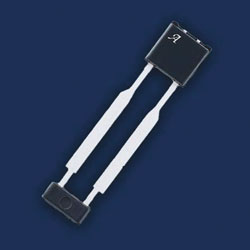
Allegro MicroSystems, Inc. offers new A19360 wheel speed and range sensors for emerging applications in ADAS. Cutting-edge GMR sensors provide automakers with the signal resolution and reliability required for advanced levels of automation in passenger vehicles and mobile as a service applications.
Peter Wells, business director at Allegro Speed and sensor Interfaces said:"Our new A19360 sensor will be a game-changer for automakers developing autonomous vehicles," "The vehicle is designed for SAE J3016 Class 3, Class 4 and Level 5 automation is designed to help safely implement functions such as park assist, fully automatic valet parking, and traffic jam assist, with a 4x increase in the ability to measure the position of the tire when it lands. It can even improve the autopilot's functionality, and low-speed control in dense environments.”
The device creates additional output events in each magnetic cycle through a special protocol compatible with the ECU, thus providing high resolution information to the vehicle system. It includes an 8 event per magnetic cycle mode for ADAS applications, providing incremental tire rolls per ~5 mm. It also includes a four-event per magnetic cycle mode that doubles the output per magnetic cycle (compared to a normal wheel speed sensor). This allows designers to halve the poles on ring magnets to save money, or increase the air gap, but still get the same amount of increment with each rotation. Automated and autonomous vehicles need better wheel rotation information for precise low-speed control.
The company's SolidSpeed digital architecture provides the widest operational air gap dynamic range and highly adaptive performance, eliminating flatness due to thermal drift and system dynamics. The device was developed based on ISO 26262 ASIL B(D) and is based on the company's monolithic GMR technology with ultra-low jitter and atmospheric gap capabilities.